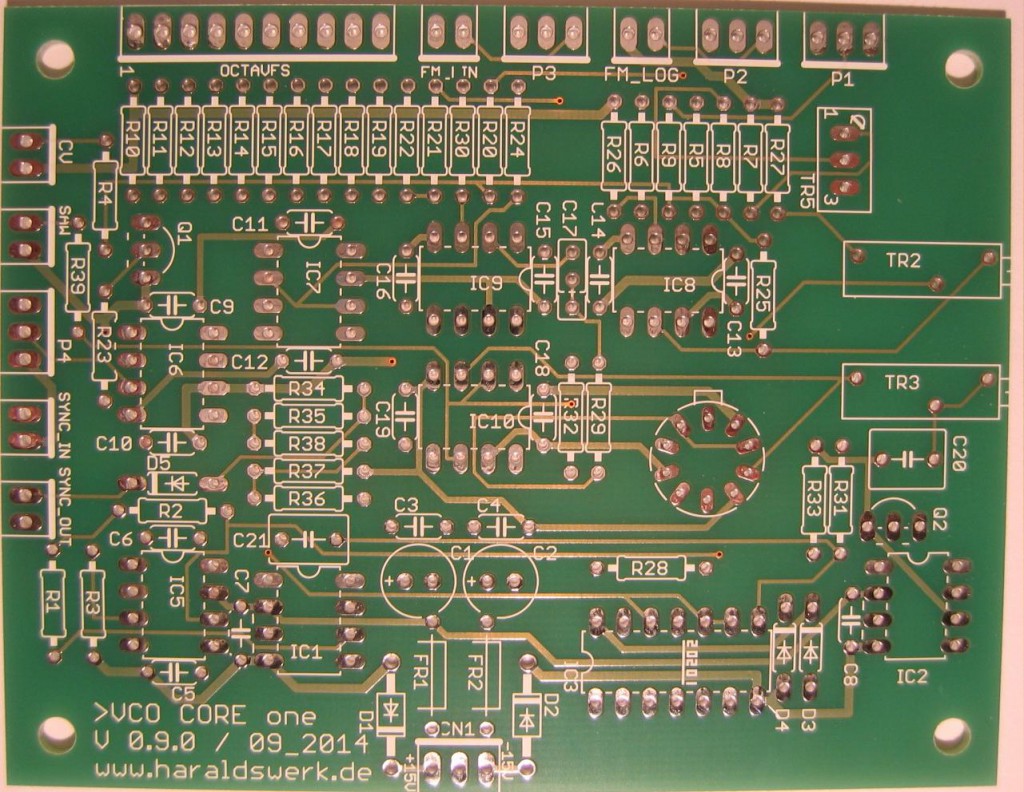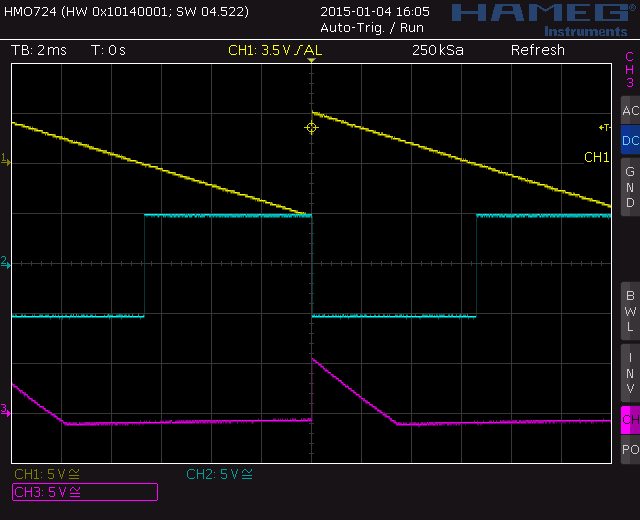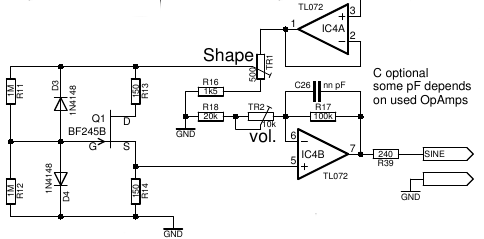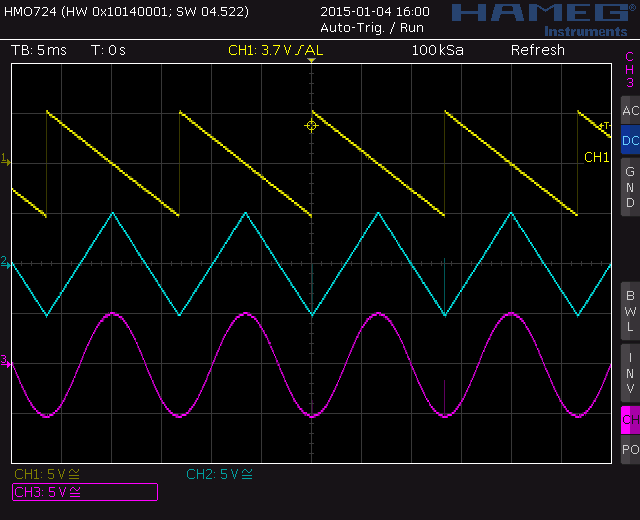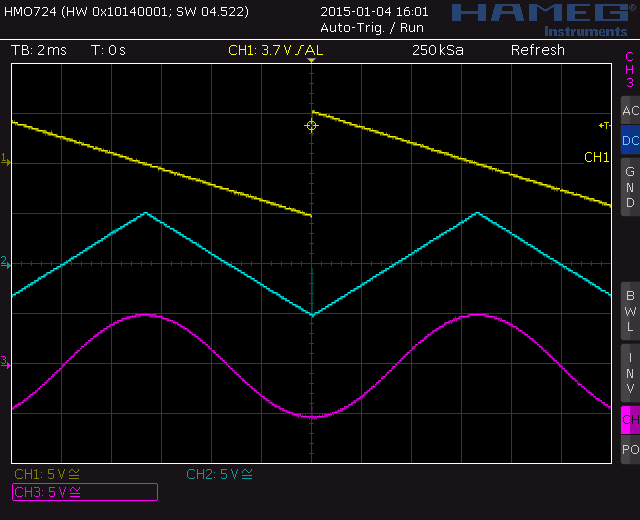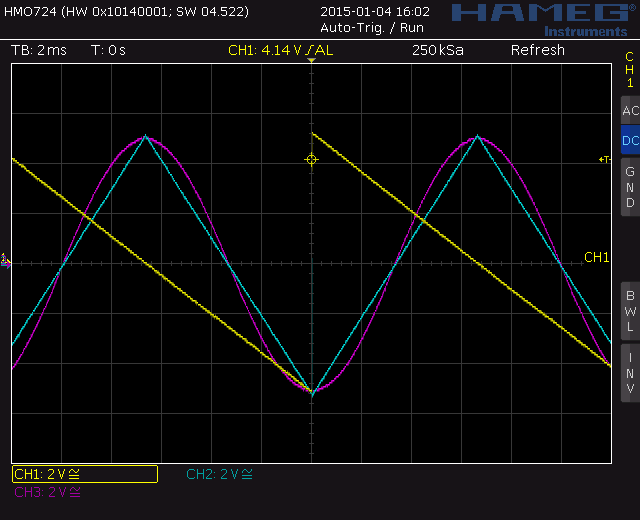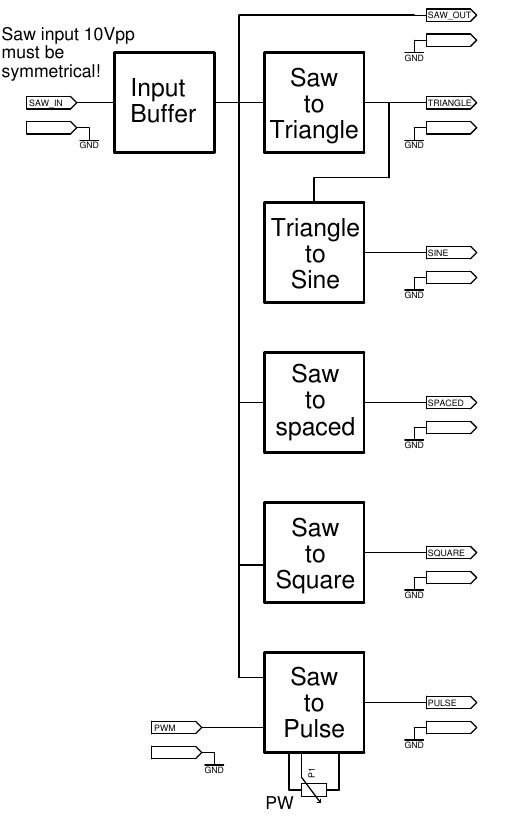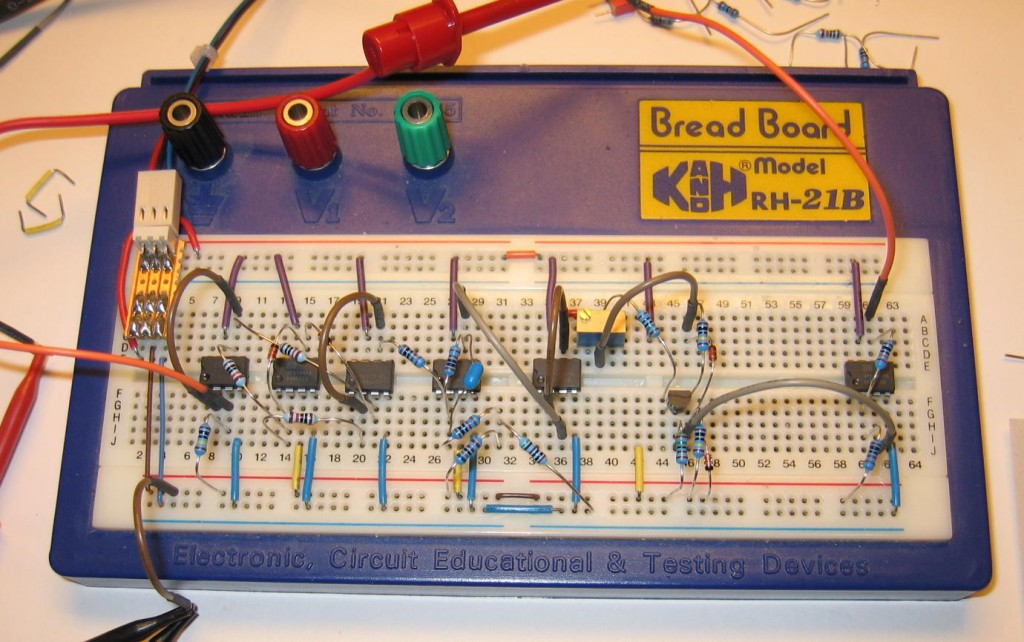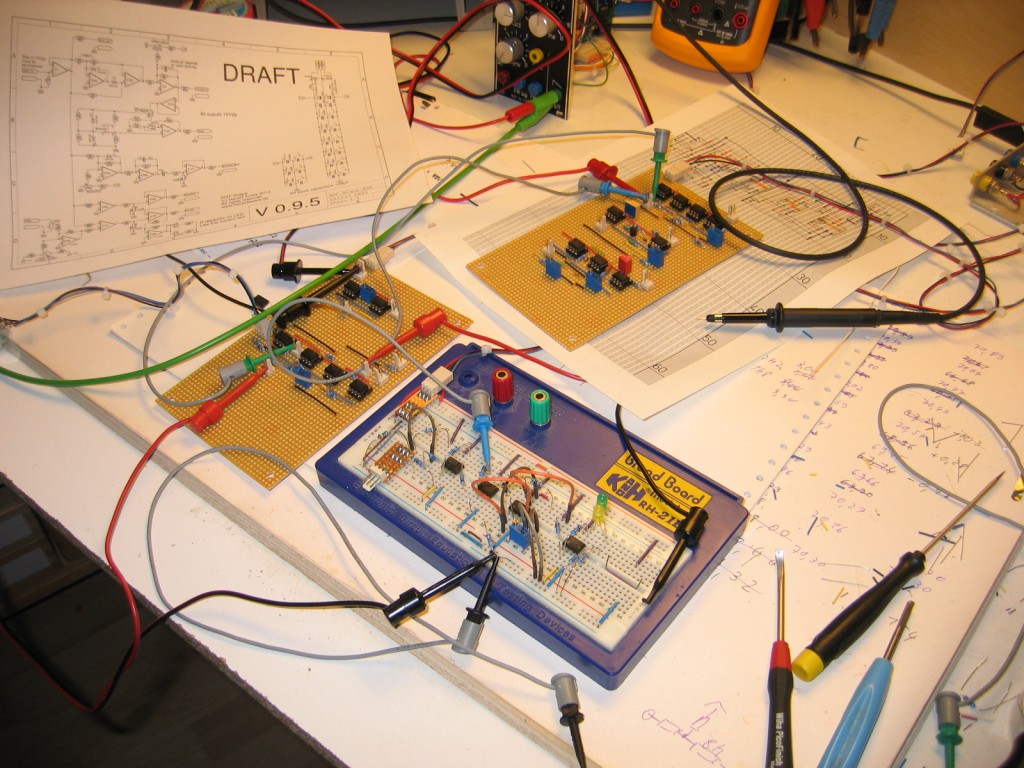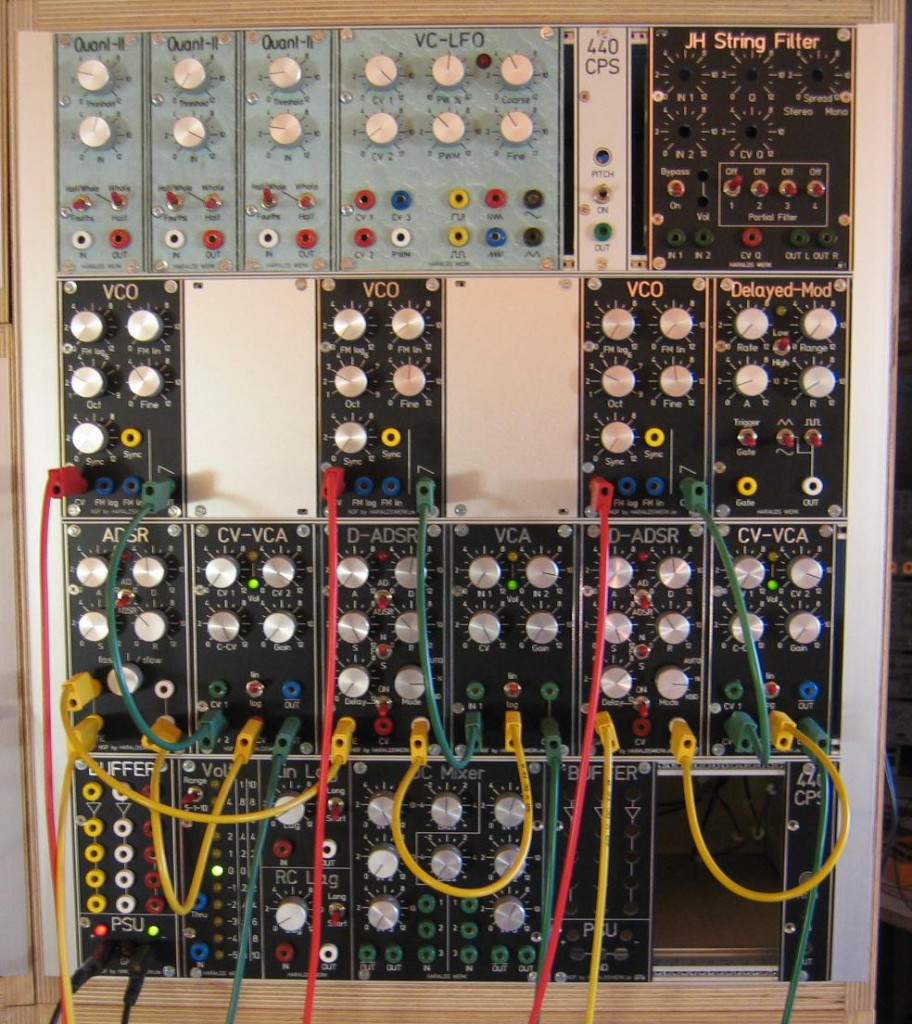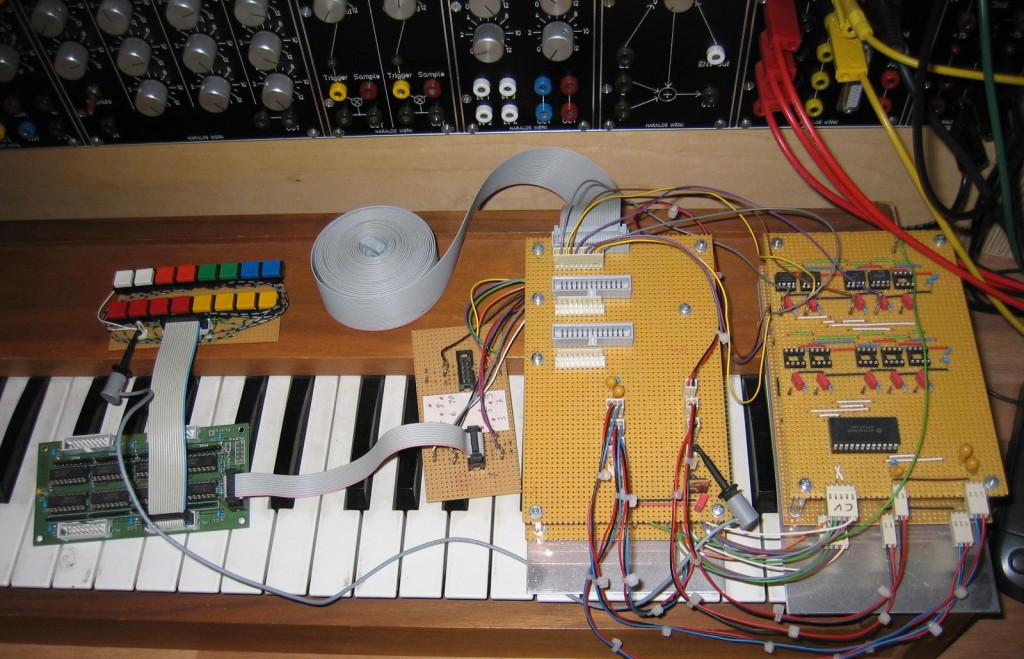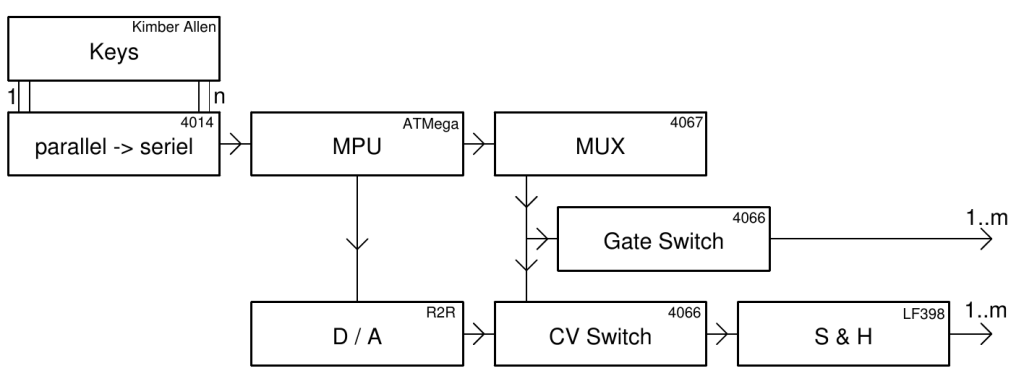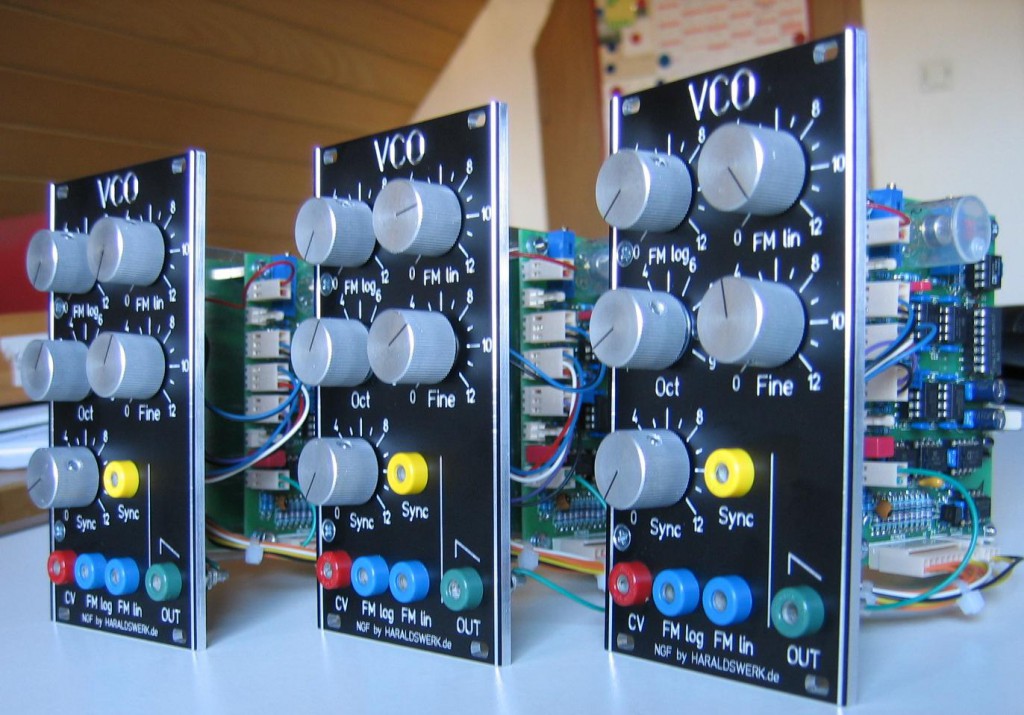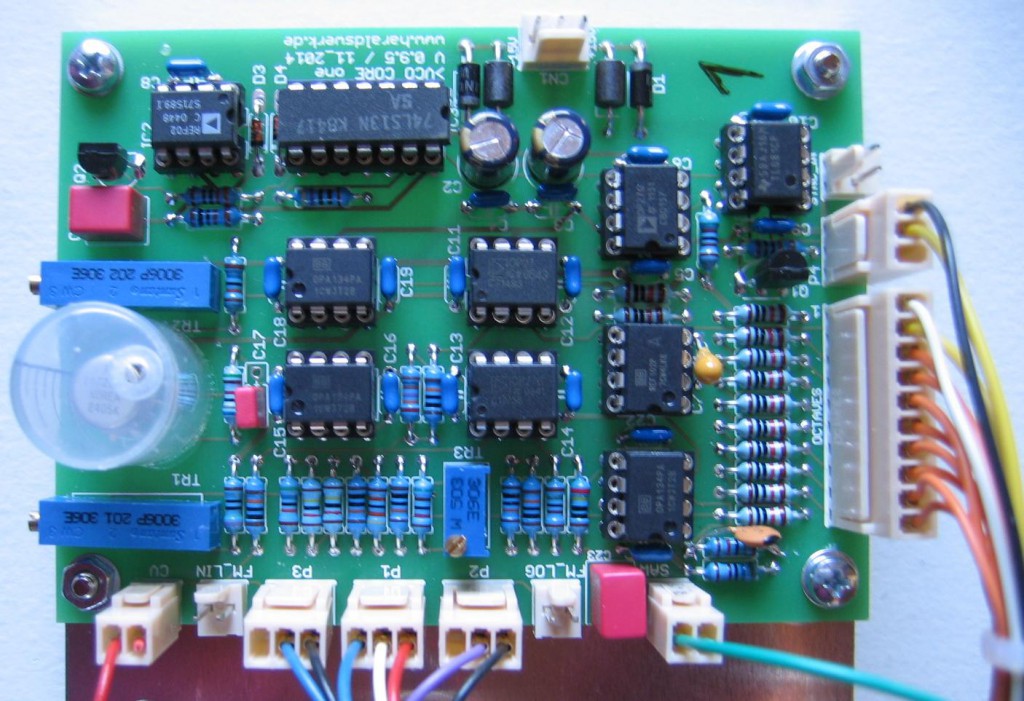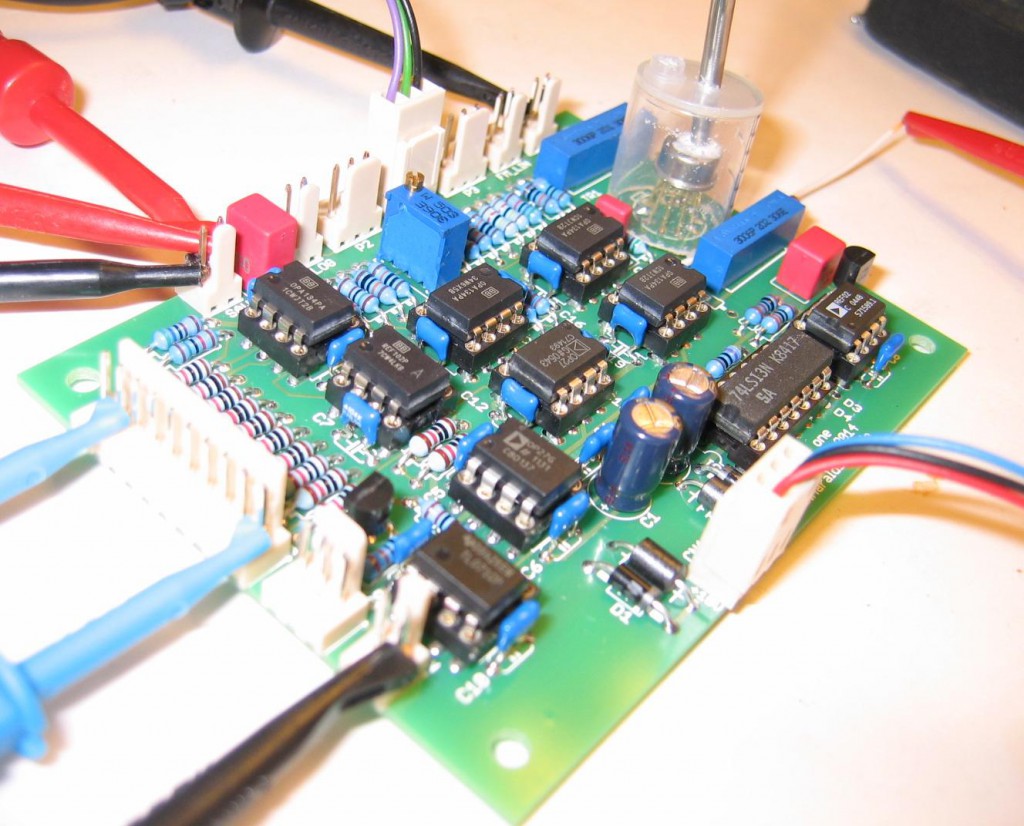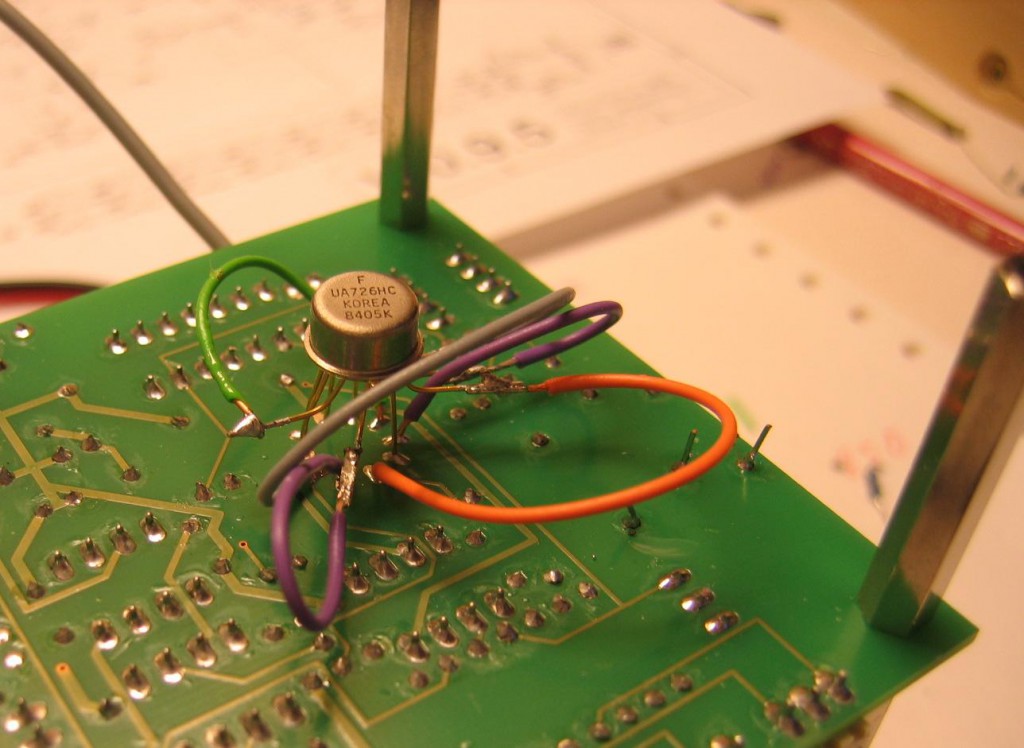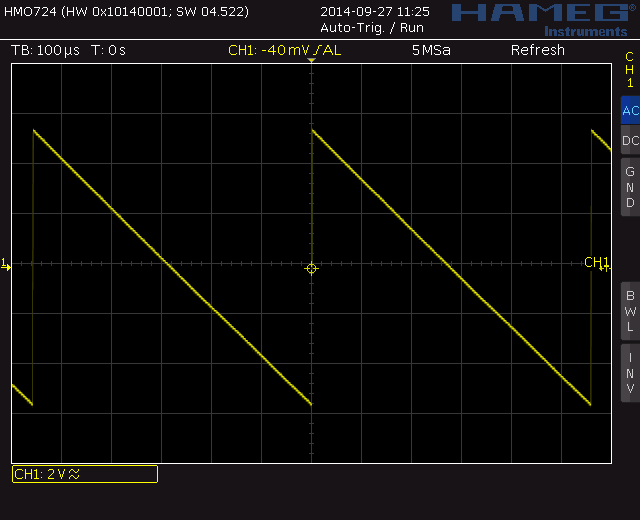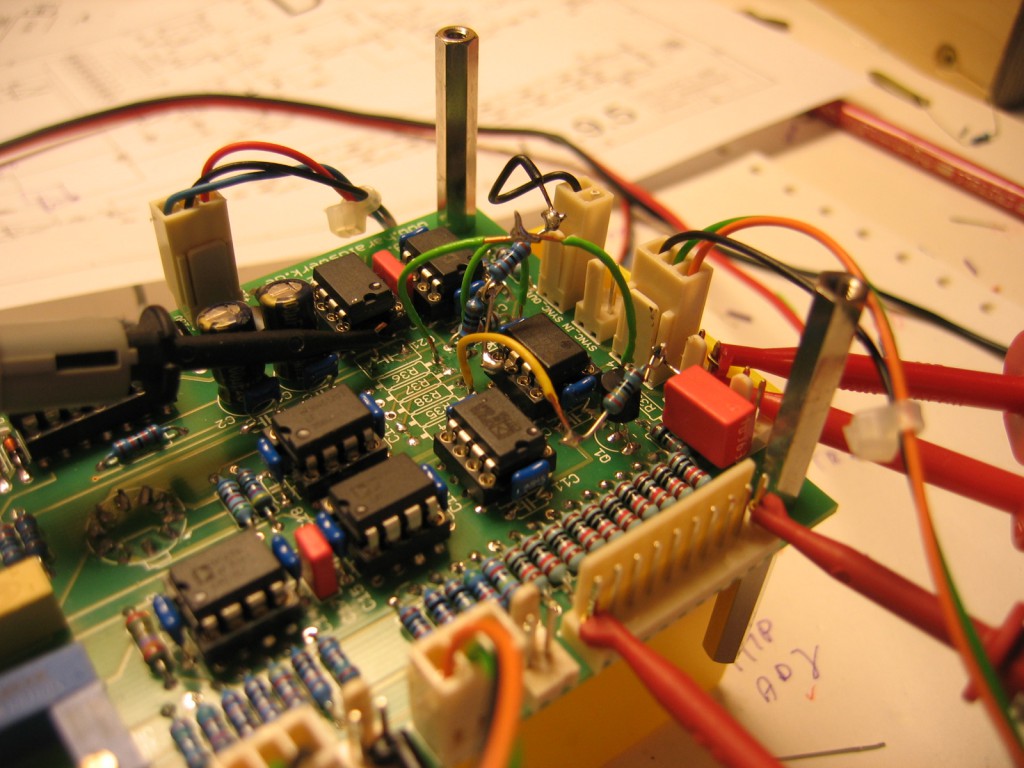To start with this Blog i want to write about a new PCB project which roots go back to the seventies. At this time a German electronics magazine published an diy analog synthesizer. The Elektor Formant. They sold PCB’s and some third party vendors sold kits as well.
So i bought and build my first few modules of an analog synthesizer. The VCO was build around the Fairchild uA726 temperature controlled differential pair, the same one used in the Mini Moog second oscillator board. Over the years a added some features to the VCO that i found useful. For instance: octave switch, sync in and out, fixed square out, FM lin, voltage reference, output mixer and some more. Getting rid of the 5V PSU was a big step. I made the changes recommended in the second Formant book as well. This leads to some wiring …
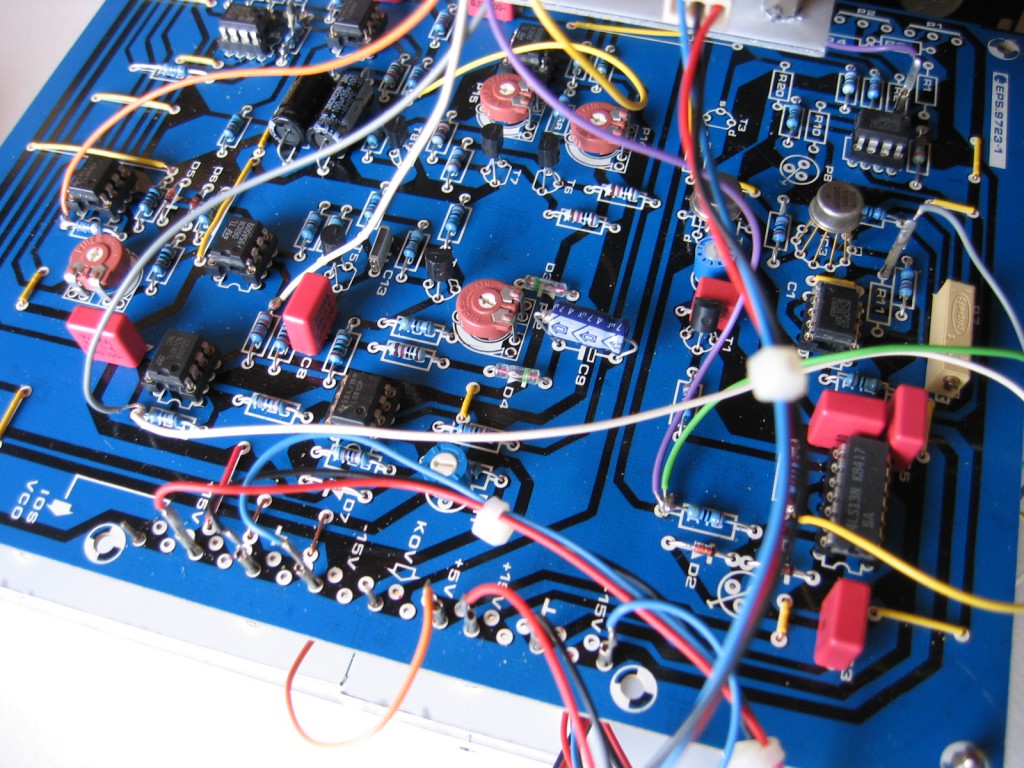 and an additional stripboard.
and an additional stripboard.
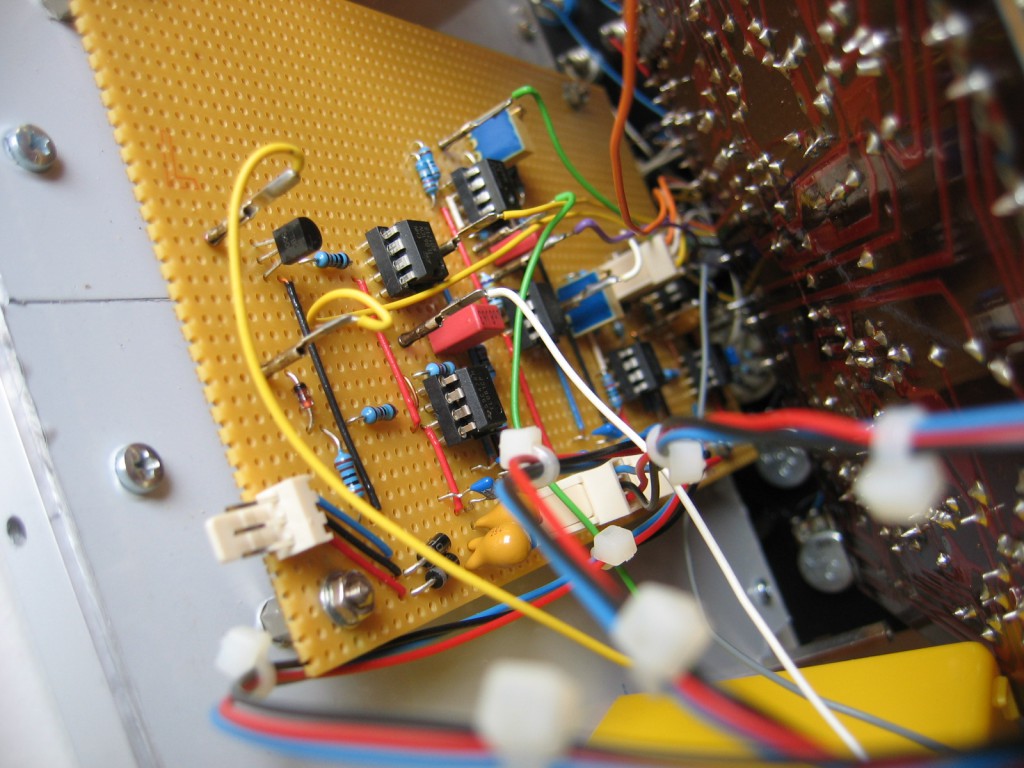
So i decided to consolidate what i have done and put all those changes on one PCB. This was possible because i have all the used obsolete parts at hand. If you want to follow this path first make shure that you can get hold on those parts (uA726, 74LS13). They are still available at a price but you have to search for them.
I only did the core VCO here. The wave shaper will be tackled later in a separate project. There are two categories of changes i did. Additions i found usefull to have and changes to increase stability. Usefull additions: Octave switch, FM lin, Sync in, Sync (pulse) out. Increased stability: Stabilized control voltages, getting rid off the 5V power suplly. Details and schematic can be found on my website.
The PCB just arrived. Now time to stuff it.
